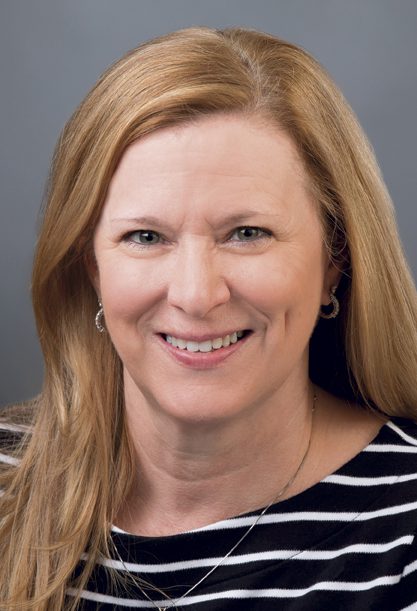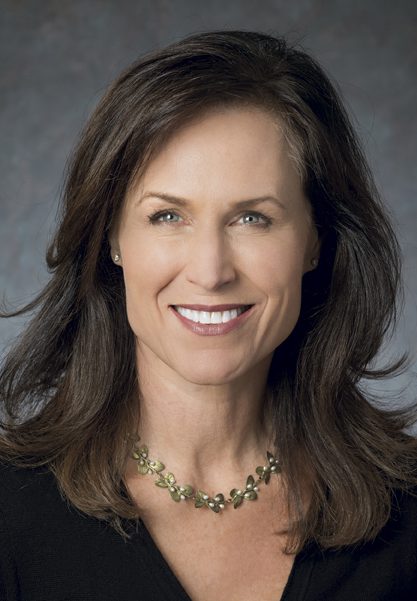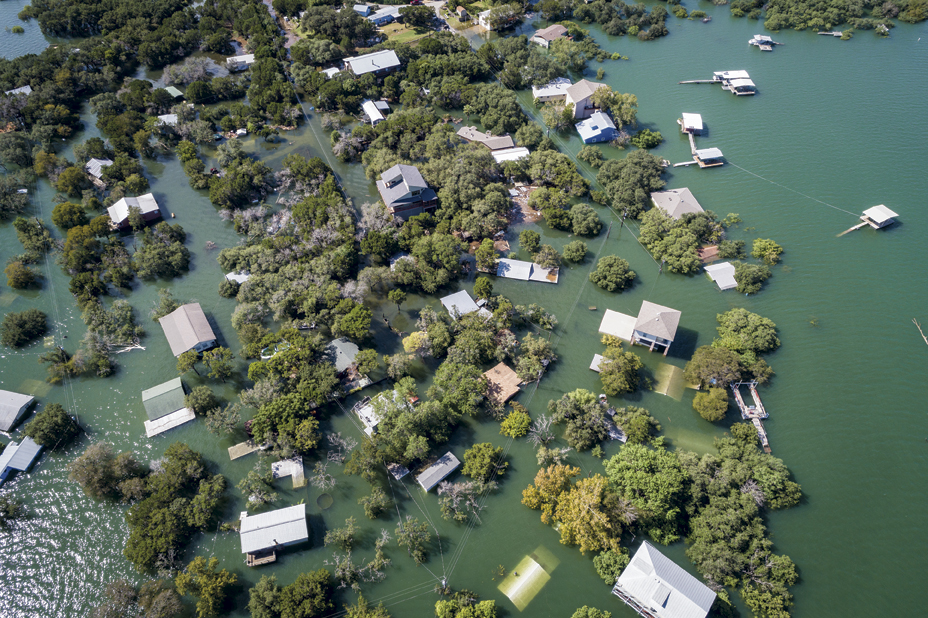FOCUS ON THE PRIVATE FLOOD MARKET
Areas not previously prone to flooding are at risk; are your clients aware?
By Lori Widmer
A lot has changed since 1968. That’s when the National Flood Insurance Program (NFIP) was created by Congress as a means of enabling property owners to purchase insurance for what was then an extremely difficult risk to model.
Yet a combination of better modeling and Congressional overhauls to the NFIP has given rise to what was just a few years ago unthinkable—a private flood insurance market. It’s a move that’s been in the works since the passage of the 2012 Biggert-Waters Flood Insurance Reform Act, which requires lenders to accept private flood policies and, as important, allows the NFIP to implement premiums that mirror actuarial risk-based premium structures. That meant that, for the first time, the program was able to better reflect the expected losses and flooding risks.

-Cynthia DiVincenti
Director and Vice President of Government Relations
National Flood Services
With the NFIP working off short-term funding extensions granted by Congress, the private arena is heating up. Since 2016, the private flood market has seen a 71% increase in direct premiums written, according to data from the National Association of Insurance Commissioners (NAIC). While NFIP still writes the majority of flood insurance policies, new modeling has made it possible for private insurers to assess and cover the risk.
The market overall
Matt Junge, head of Swiss Re’s Property Solutions in the United States and Canada, says that the tools insurers are using are “quite interesting and innovative. Catastrophe modeling is often a key piece of a rating plan, but supplementing that are many other variables that allow for more granular, confident pricing. This enables insurers to enter into a market that was thought to be uninsurable not long ago.”
And enter they have. “It depends on whom you’re talking to, but in all, the private market took off a few years ago,” says Matt Herr, president of Superior Flood, Inc. Even so, Herr says, the market did have a few hiccups. “It slowed down slightly with all the hurricanes. But I would say the health of the market is very solid on the private flood side, and it’s here to stay.”
A healthy market brings in more competition. “We see the private flood product being introduced by different players, or they’re expanding and making it available in additional states,” says Cynthia DiVincenti, director and vice president of government relations for National Flood Services (NFS). Even the NFIP has moonshot goals to increase accounts. “They want to double the number of properties insured for flood,” she says.
“The flood market in general is not experiencing the same capacity issues as some other property lines are,” says Craig Poulton, CEO of Poulton Associates, which administers the Natural Catastrophe Insurance Program. He notes that the overall reduction in capacity or demand for higher rates on CAT exposures don’t seem to be having a dramatic effect.

-Anne Wilson
Property Expert, Property and Casualty Business Management Group
Swiss Re
Pricing, however, is another matter. Renee Belgarde, senior vice president and broker at Worldwide Facilities, says in that regard, the private flood market is mirroring other lines of business. “The flood market is experiencing higher pricing and less capacity (lower limits) for the more difficult exposures, like the rest of the property marketplace. Coverage is avail-able for most all areas (including coastal properties, properties near lakes, rivers and levees) and in all flood zones. The issue becomes the pricing and how much limit is available for a particular risk.”
Belgarde has also seen insureds scale back on coverage. “Pricing is causing insureds to purchase lower limits or go with higher deductibles. We are seeing average rate increases around 10% to 25%, but if the risk has very high exposures or has suffered a recent loss, those rate increases can be much higher.”
Same claims, different severity
While the standard claim driver is a flood event, experts are seeing an increase in severity, and a changing trend around how floods are occurring. “The obvious claim driver for flood perils is Mother Nature,” says Anne Wilson, property expert with Swiss Re’s Property and Casualty Business Management group. “And we can’t discount the impact of climate change on these weather events. Our climate and data scientists tell us to expect more secondary perils, such as floods, following hurricanes or river flooding.”
Still, Wilson says that the risk itself is easier to mitigate with ample warning. “Heavy manufacturing and engineering risks have expensive equipment or large inventory stores that can be quickly destroyed by water losses. Healthcare occupancies would be another category with higher losses, due to the sensitivity of medical equipment and the high costs to replace it. The time it takes to repair or replace the equipment will also drive higher business interruption losses.
“These types of industries, especially, need to think of loss prevention and risk mitigation for flood,” she adds.

-Renee Belgarde
Senior Vice President and Broker
Worldwide Facilities
That means inland flooding will be increasing in frequency. “Insureds who hadn’t purchased coverage in the past are now seeing more flooding occur around the country, and they are inquiring about coverage,” says Belgarde. “In addition, FEMA instituted several changes that took effect on January 1, 2020, and April 1, 2020, which is causing more insureds to look outside of the NFIP product. Those changes include rate increases and new mapping that have put many properties into a Special Flood Hazard Area (SFHA).”
For agents and brokers, Belgarde says, these are changes that will certainly alter property coverage going forward. “This change is important for agents and brokers to be aware of because coverage now may become a requirement of the lender and no longer voluntary to purchase.”
Inland flooding, in Poulton’s estimation, often is a surprise for homeowners and the agent community alike. He says that zoning authorities, perhaps because they’re uninformed, have allowed development in flood zones—“NFIP or otherwise. Roughly 50% of the structures in the U.S. that should be identified as being located in an NFIP flood zone are not captured by the current NFIP flood zone maps. That results in large numbers of uninsured flood losses that would have been covered if flood zone mapping were more accurate and more strictly abided by.”
This puts the onus to some degree on producers to know where the flooding is more likely to occur and not just where NFIP flood zones are located. “Producers should understand that many of their insureds are not buying flood insurance due to a false sense of security,” Poulton says. “Many homeowners believe that because they are not in an NFIP designated flood zone and the lender does not require them to buy flood insurance to obtain a mortgage, then they must not need it. Unfortunately, about half of the time, the exposure to the peril of flood for these property owners is likely just as severe as their neighbor’s, whose home is in a designated flood zone.”
Poulton suggests that agents and brokers educate policyholders about their flood risks. “If a producer is not sure of a property’s true flood risk, they should look beyond the NFIP and get a quote from the private market, which usually uses risk assessment techniques that are far superior to those used by the NFIP,” he explains.
That includes knowing what lies upstream. Herr cites the flooding in May 2020 when a privately owned dam in Michigan failed. “Unfortunately, the dam was owned by a private company and had three violations,” says Herr. Still, had the area not been hit with heavy rain, the incident might not have happened at that time, if at all, he notes.
The other issue, Herr says, lies in an aging infrastructure. “Our levees and dams are not what they used to be.”
Hobson says levees are far worse than many might have imagined. “The nation’s aging, deteriorating levee systems protect property valued up to $2 trillion, according to a 2017 American Society of Civil Engineers report.” Hobson says levees across the country received a “D” grade in the report.
The risks are also compounded by housing trends. “A growing number of people live in a 1-to-100-year flood plain, with estimates of some 40 million people currently living in them,” says Hobson. “By 2050, that number could grow to 60 million to 75 million, according to an environmental research letter published in IOP science.”

-Matt Herr
President
Superior Flood, Inc.
It then falls on the agent and broker community to get policyholders to see the severity of the risks, and the frequency with which areas not used to regular flooding are now seeing repeated events. “One of the biggest challenges in promoting a robust private flood market is helping property owners understand their risk,” says Junge. “The industry is creating compelling products and is seeing real traction, but many property owners continue to believe that they are not at risk of flooding. Insurers, agents, real estate agents, and mortgage bankers, in addition to property owners, are key pieces of the puzzle as we educate property owners about the risk of flooding and the affordable coverage options that are available to them.”
DiVincenti says appealing to the financial reality of how flood can impact policyholders is important. “It’s just understanding how important flood insurance can be for a property owner to recover from a flooding event—understanding the economic situation they can find themselves in.
“Disaster assistance isn’t a given, and property owners should not rely on it,” she explains. “It isn’t always made available, and when it is, it could be just a loan they’re going to have to repay.”
That’s where flood insurance can become that critical piece of a property insurance program, says Belgarde. “It is up to agents and brokers to do their best to guide their insureds as to the best way to protect their assets against the risk of a flood loss. It tends to be a forgotten coverage until an insured either experiences a loss or sees massive flooding happening around them.”
“Two universal truths about floods remain—floods are the most common and the most severe natural disasters in the U.S.” says Hobson. “It’s critical that agents and brokers make the topic of flood a routine part of conversations with their clients, because they can help clients build a broader insurance portfolio with private flood insurance coverage.”
For more information:
Chubb
www.chubb.com
National Flood Services
www.nationalfloodservices.com
Poulton Associates
www.poulton.com
Superior Flood, Inc.
www.mysuperiorflood.com
Swiss Re
www.swissre.com
Worldwide Facilities
www.wwfi.com
The author
Lori Widmer is a Philadelphia-based writer and editor who specializes in insurance and risk management.






